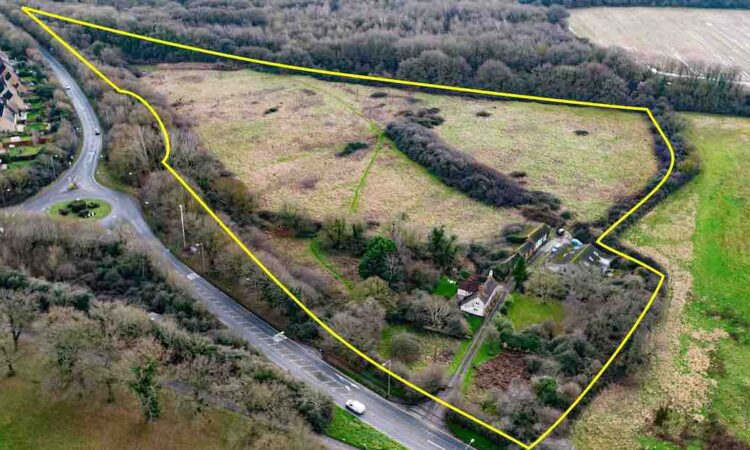
Proposals for 108 new homes in an Essex market town – almost half of which will be affordable – have moved a step closer after the land was sold to a developer.
Cala Homes (North Home Counties) has acquired the 12.6-acre site at Staggs Farm in Great Dunmow for an undisclosed sum.
The site and adjacent land forms part of a hybrid planning permission for 440 dwellings.
Staggs Farm has full planning permission for 108 new homes, 40 per cent of which will be affordable. Financial contributions of around £2 million will be delivered for local education, transport and community facilities.
The deal was completed by the development team at Savills in Cambridge on behalf of the Mackenzie Trust.
William Newton, associate director in the development team at Savills in Cambridge, said: “Demand for land is proving resilient – with optimum-sized sites in primary locations attracting greatest interest. A lack of supply has also meant that land values have remained relatively stable.
“Major housebuilders, partnership developers and privately funded developers all appear to be growing in confidence – with PLC housebuilders the most active.
“Whilst some are cautious and looking to preserve margins, others are bidding competitively on a range of site sizes, from 50 units to fill gaps in their pipelines, to larger sites to grow their number of outlets.
“The land at Staggs Farm was no exception and we received strong interest. It offers an exciting opportunity to deliver sustainable growth in a well-connected location – significantly contributing to the supply of much-needed new homes in the local area.”
Alexandra Deol, area land director for Cala Homes (North Home Counties) said: “We are thrilled to acquire the site and look forward to delivering new homes in Great Dunmow, including 44 affordable dwellings. Financial contributions of around £2m will be delivered for local education, transport and community facilities.
“Additionally, all homes will be equipped with electric vehicle charging points, air source heat pumps and be built using timber frame construction, which has been shown to have up to 20 less less embodied carbon than a typical masonry build.”
© Eastern Echo (powered by ukpropertyforums.com).
Sign up to receive our weekly free journal, The Forum here.
